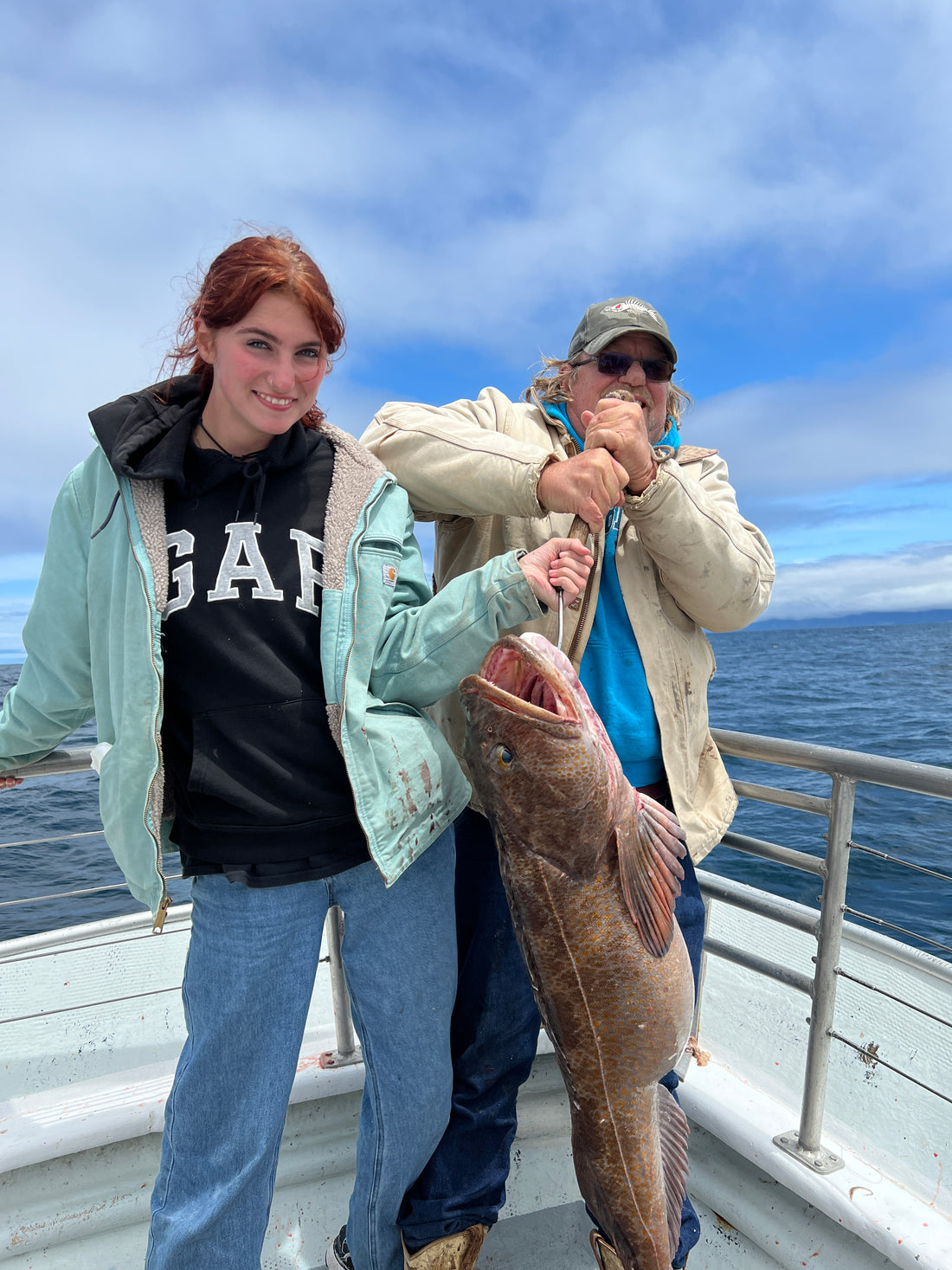When fishing for cod or lingcod, it's important to understand the differences between the fish. You'll always have a bigger advantage with having more knowledge about the difference between lingcod and what most scientists call "true cod".
What Is a Lingcod and Why Is Lingcod Different Than a "True Cod"?
Lingcod, also called Ling Cod or the scientific name Ophiodon elongatus, are different from other cod species in several ways, including their scientific classification, appearance, habitat, and behavior. In order to catch more lingcod, you must first understand the difference between lingcod and the average cod.
While lingcod share the name "cod," they are taxonomically distinct from true cod species and exhibit different ecological adaptations based on their specific habitats and behaviors. It's important to note that lingcod are not true members of the cod family but are often referred to as such due to historical naming conventions.
Our List of Key Distinctions Between Lingcod and "True" Cod

Lingcod Scientific Classification:
Lingcod belong to the family Hexagrammidae, which includes other species like the greenling and rockfish. They are not classified under the Gadidae family, which is where true cod species are found.
True Cod encompasses several species, each with its unique characteristics and distribution. Atlantic cod (Gadus morhua), prevalent in the North Atlantic, is renowned for its white, flaky flesh and historical significance in European cuisines, though overfishing has led to population declines. Pacific cod (Gadus macrocephalus), also known as Alaska pollock, thrives in the North Pacific and is a key commercial species, often utilized in fish products. Saffron cod (Eleginus gracilis) inhabits the Arctic and northern Pacific and is occasionally caught as bycatch. Greenland cod (Gadus ogac), or Greenland halibut, found in the North Atlantic and Arctic Oceans, boasts a distinct elongated body.

Lingcod Appearance vs. True Cod Appearance:
Lingcod have a distinctive appearance with a large head and a wide mouth, often filled with sharp teeth. They also have a mottled coloration, ranging from greenish to brownish, which helps them blend into their rocky coastal habitat.
True cod species, such as Atlantic cod (Gadus morhua) and Pacific cod (Gadus macrocephalus), typically have a more streamlined body, a smaller head, and a softer, less jagged appearance.

Lingcod Habitat vs. True Cod Habitat:
Lingcod are primarily found in the North Pacific, along the coasts of North America from California to Alaska, as well as in parts of Asia. They prefer rocky or reef habitats and are often found in shallow waters close to the shore.
True cod species inhabit a variety of environments, including deeper offshore waters and continental shelves. Atlantic cod, for example, is commonly found in the cold waters of the North Atlantic.

Lingcod Behavior:
Lingcod are known for their aggressive behavior and are ambush predators. They often lie in wait for prey, using their powerful tails to quickly strike and capture smaller fish or invertebrates.
True cod species are generally more sedentary and may feed on a wider range of prey items, including fish, crustaceans, and mollusks.
Lingcod vs. True Cod Differences Summary:
Lingcod are a vastly different species when compared to true cod species. While they both share the name "cod", the methods to catch lingcod and true cod vary significantly. Ling cod are much more aggressive, solitary fish than true cod. True cod are caught throughout the world in almost all oceans, while lingcod primarily live in the Pacific ocean along the west coast of the United States and Canada. Lingcod are jagged, strong fish that stand out as predators when compared to their true cod counterparts.

